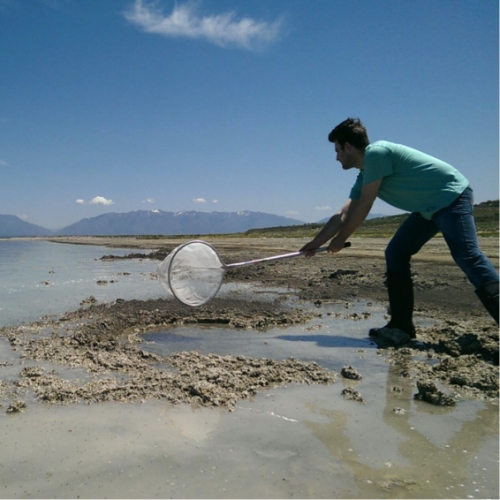2015 Doyle W. Stephens Scholarship Recipient
Presenting on his research supported by the scholarship
Bio:
Chris Mansfield is a senior biology major at Westminster College. Throughout his time at Westminster, he has worked with Frank Black on research relating to methylmercury at the Great Salt Lake. The most recent of these projects—investigating rates of methylmercury photo-degradation at the lake—received the support of the Friends of Great Salt Lake with the Doyle Stephens Scholarship.
Chris has lived in Utah in close proximity to the lake his entire life. Over the course of his research experience, he has enjoyed becoming aware of issues concerning the lake’s unique ecosystem, and is excited to be at the forum where discussion on these matters takes place.
Title: Rates of Monomethylmercury Photo-Degradation at the Great Salt Lake
11:20am - Thursday, May 12th
Abstract: Monomethylmercury (MMHg) is a toxic, organic form of mercury that is found in aquatic ecosystems, with water column concentrations controlled by competing processes of production and degradation. It poses particular environmental concern, as it is bioaccumulated to harmful concentrations in top predators.
The Great Salt Lake (GSL) is as an ideal location to study MMHg cycling due to its unusually high MMHg concentrations. We hypothesized that these high MMHg concentrations are in part due to the very high salinity in the GSL (5-28%), given that previous studies have reported MMHg photo-degradation rates decrease with increasing salinity. This project attempts to better understand an important aspect of MMHg’s biogeochemical cycling in aquatic ecosystems by characterizing the direct effect of specific ion interactions and water conditions on rates of light-mediated MMHg decomposition. Concentrations of different ions and MMHg were varied in natural waters collected in the summer of 2015 from multiple embayments of the Great Salt Lake, a nearby freshwater lake, and high-purity water then exposed to either natural sunlight or light of specific wavelength ranges in a photo-reactor, from which photo-degradation rates were determined. Data collected so far do not indicate that rates of MMHg photo-decomposition are substantially slower in the GSL than less saline waters, suggesting this may not be the underlying reason for the high concentrations of MMHg in the GSL.

